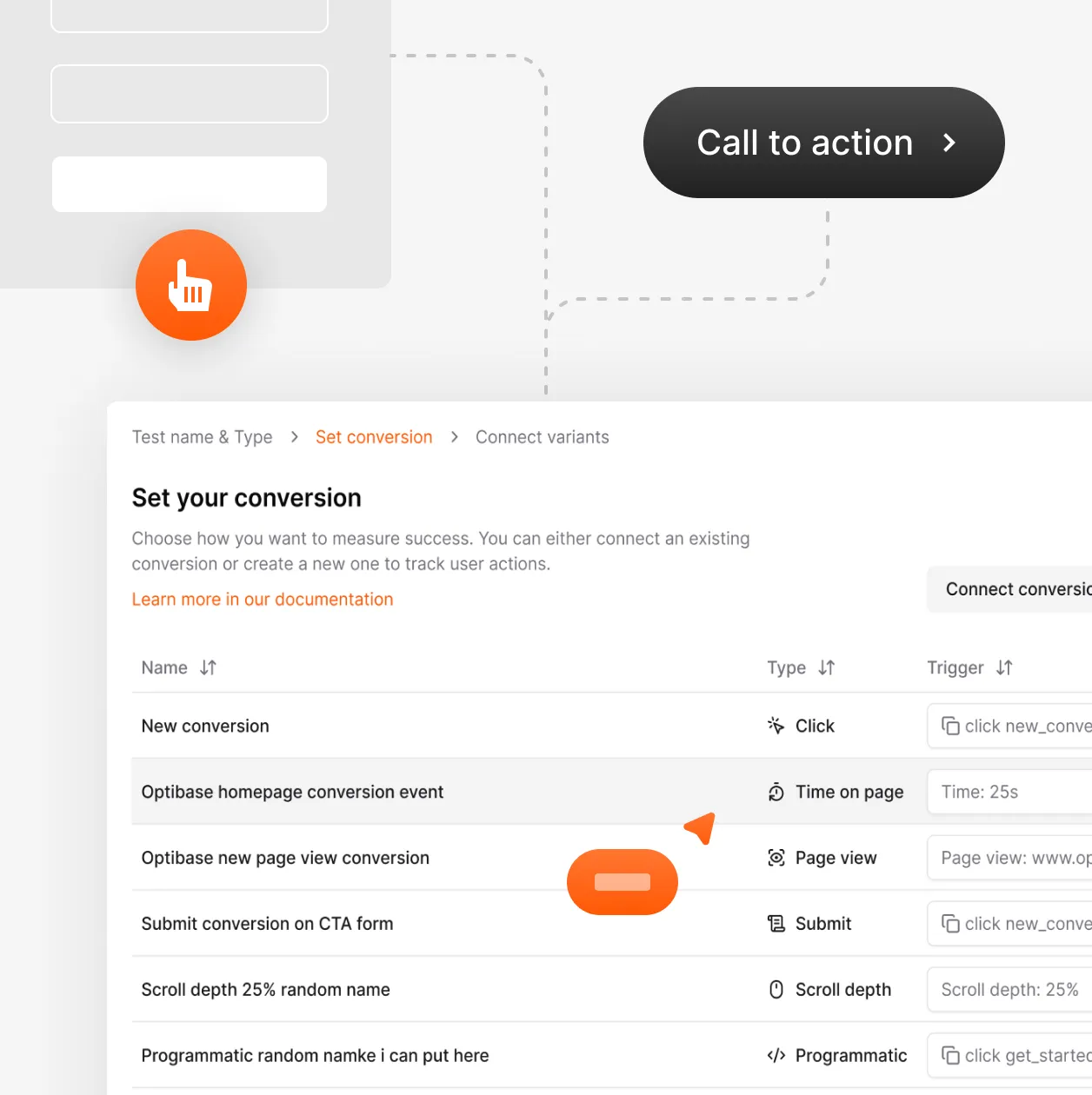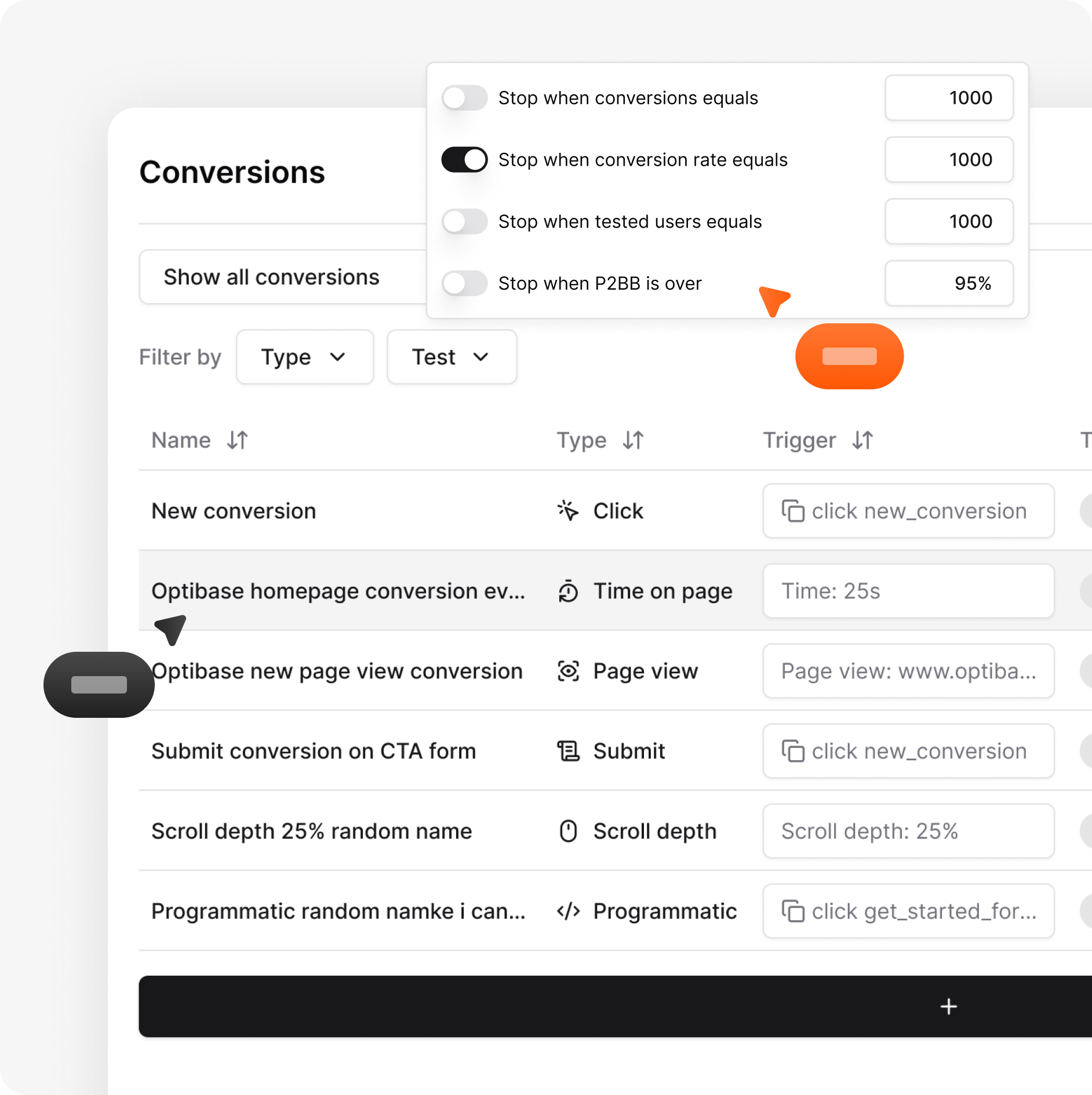Conversion tracking
What is conversion tracking?
Conversion tracking is one of the most important parts of any A/B testing, enabling you to measure the effectiveness of variations. Whether you A/B test, split test or multivariate test, Optibase allows customizable tracking for every element on your Webflow website.
By implementing conversion tracking, you can monitor actions like clicks, form submissions, page views, scroll depth and much more. This kind of tracking lets you assess the performance of individual elements accurately and make data-driven decisions to optimize your site.
The ultimate guide to A/B testing in Webflow
Follow this guide and test different versions of your site and discover the best performing ones to improve conversions.



.svg)


.svg)




.svg)
.svg)








